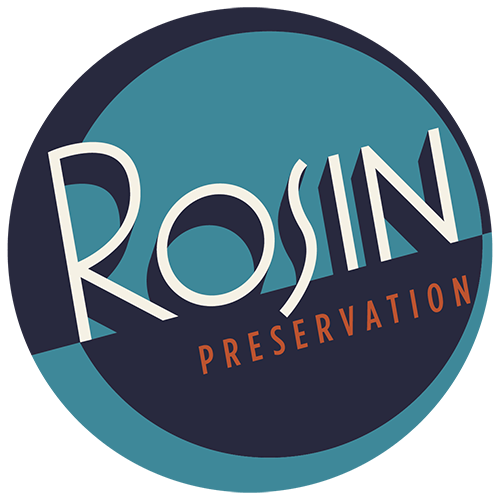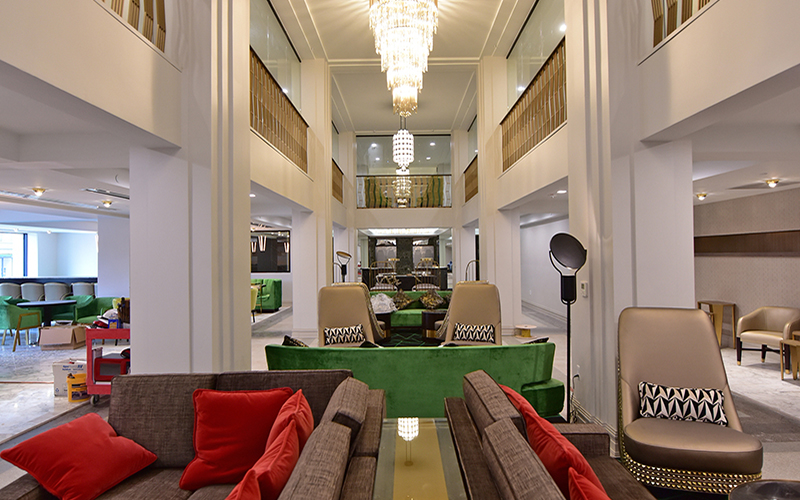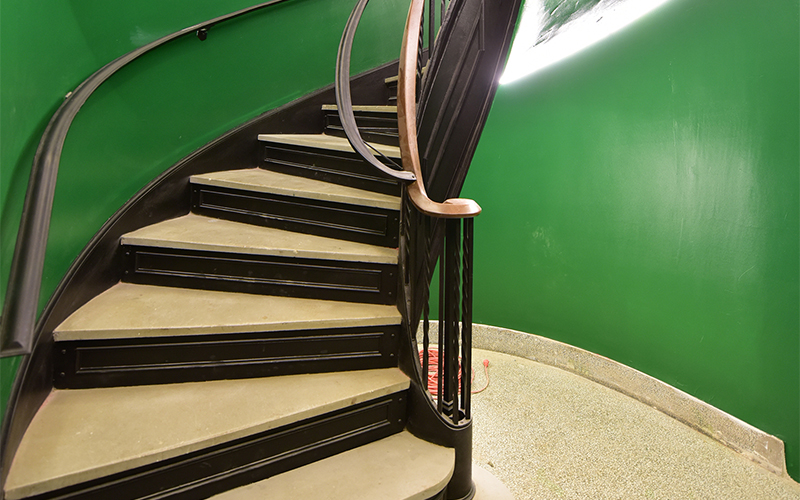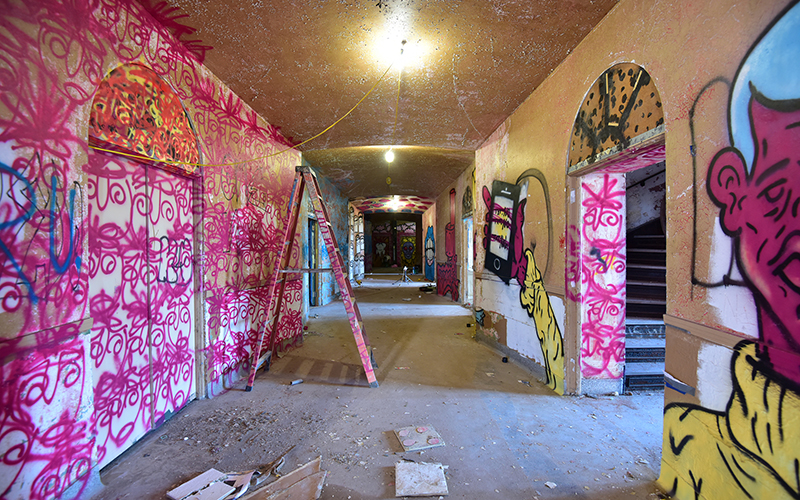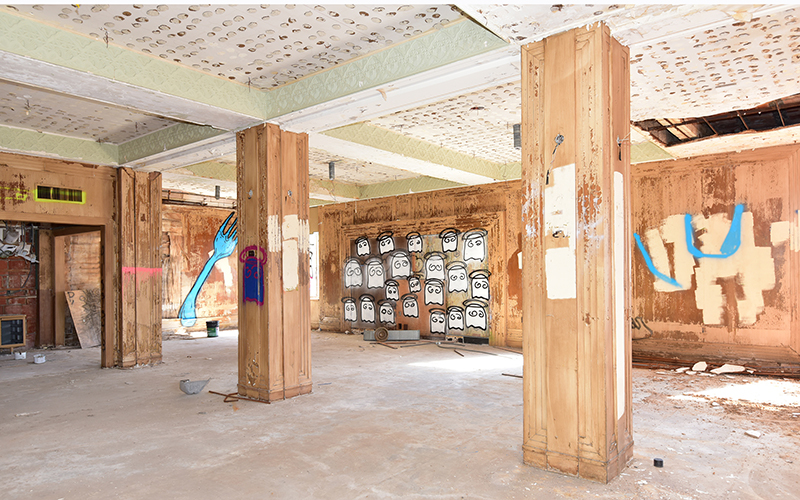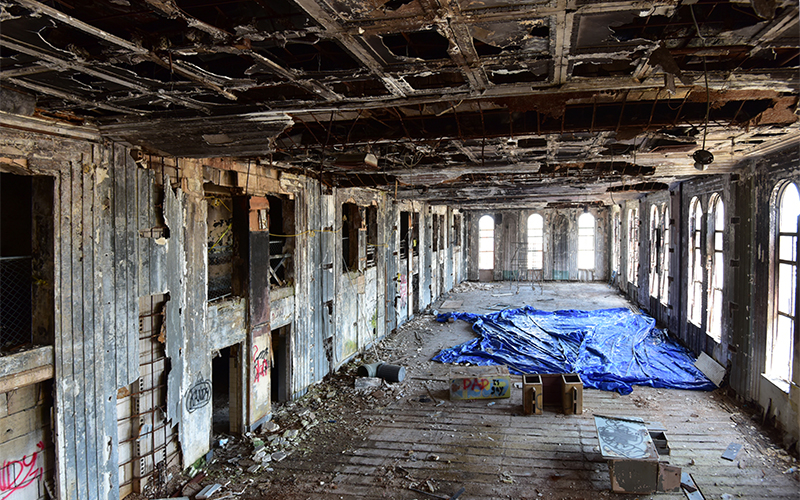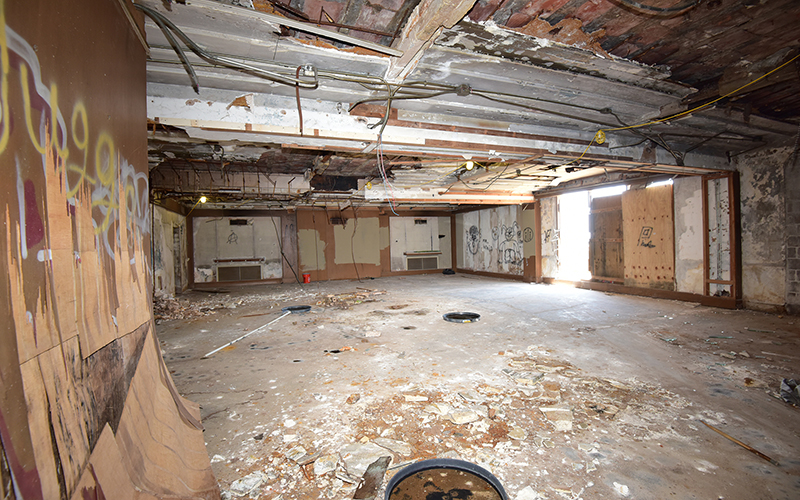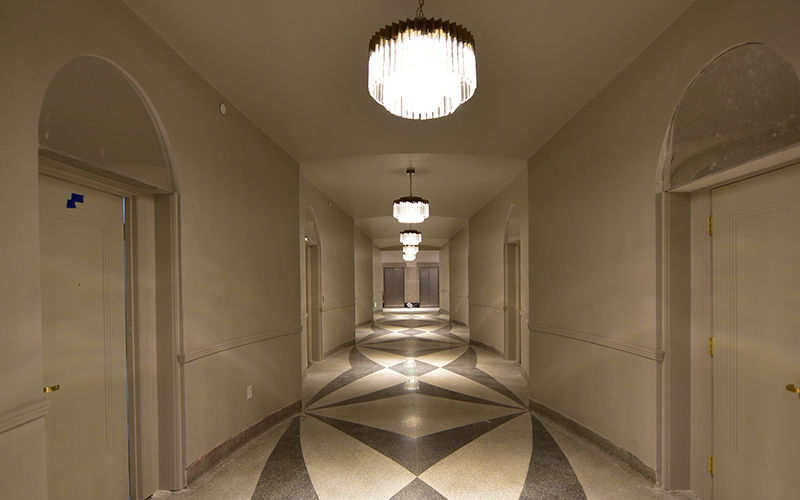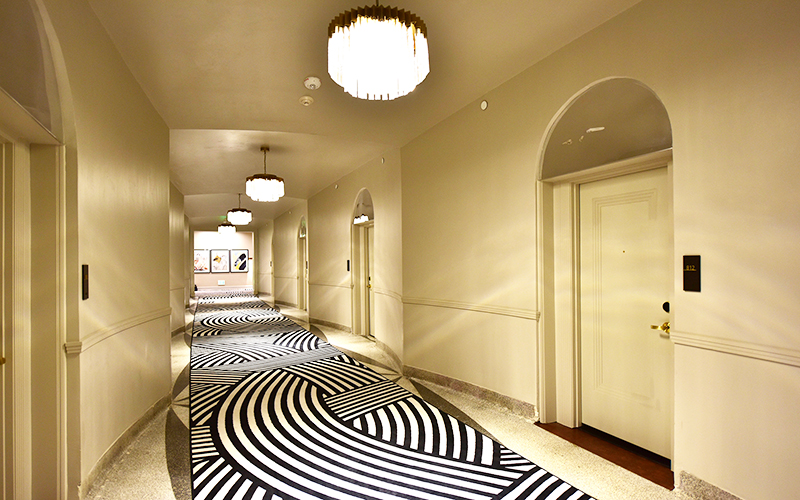Tulsa ClubTulsa Club Hotel
The Art Deco Tulsa Club was constructed in 1927. It was designed by innovative architect Bruce Goff, early in his career during his tenure with Rush Endicott Rush, to house the Tulsa Chamber of Commerce and the Tulsa Club. The Chamber of Commerce occupied the lower five floors. Tulsa Club, a social and athletic club, occupied floors 6-11. The Club offered its members a large two-story ballroom, smaller dining rooms, dormitories for overnight stays, a gymnasium, barber shop, and numerous smaller lounges and libraries. The top floor contained a dining room surrounded by an open terrace.
The Chamber moved out after World War II and Tulsa Club occupied the building until the 1990s. After it moved out, the building sat vacant for more than 20 years while several different plans for rehabilitation failed. In 2010 under contract with the City of Tulsa, Rosin Preservation successfully listed the Oil Capital Historic District in the National Register of Historic Places. The district included Tulsa Club as a contributing building, making it eligible for state and federal historic tax credits. In 2015, Tulsa developer Ross Group embarked on an ambitious plan to rehabilitate the vacant building as a hotel. Ross Group engaged Rosin Preservation to navigate the process for utilizing state and federal historic tax credits.
Rosin Preservation engaged SHPO and NPS early in the process to ensure the building retained sufficient integrity to remain a contributing structure to the NR district, as it endured extensive vandalism and numerous fires while it stood vacant. The team also wanted to be sure that schematic plans for rehabilitation would be compatible with the Secretary of the Interior’s Standards before making the commitment to proceed. Rosin Preservation collaborated with Lilly Architects throughout the project to come up with creative solutions to unique spaces within the building that preserve the historic character. Such spaces include the marble-clad entry and 1st floor elevator lobby at the west end, the original lobby recreated by removing the infilled atrium, a unique scalloped hallway on the 8th floor, the grand ballroom on the 10th floor that had been gutted by fire, the restaurant space on the 11th floor, and a lounge at the east end of the 8th floor, which features a unique fireplace with mosaic tile surround.
In summer 2019, Tulsa Club Hotel, of the Curio Collection by Hilton, opened with much fanfare and many accolades. This jewel of a building has contributed to downtown Tulsa’s revitalization and offers a unique destination spot for locals and visitors.
Address
115 East 5th Street Tulsa, OK
Tags
National Register, Tax Credit, Hotel, Hospitality
